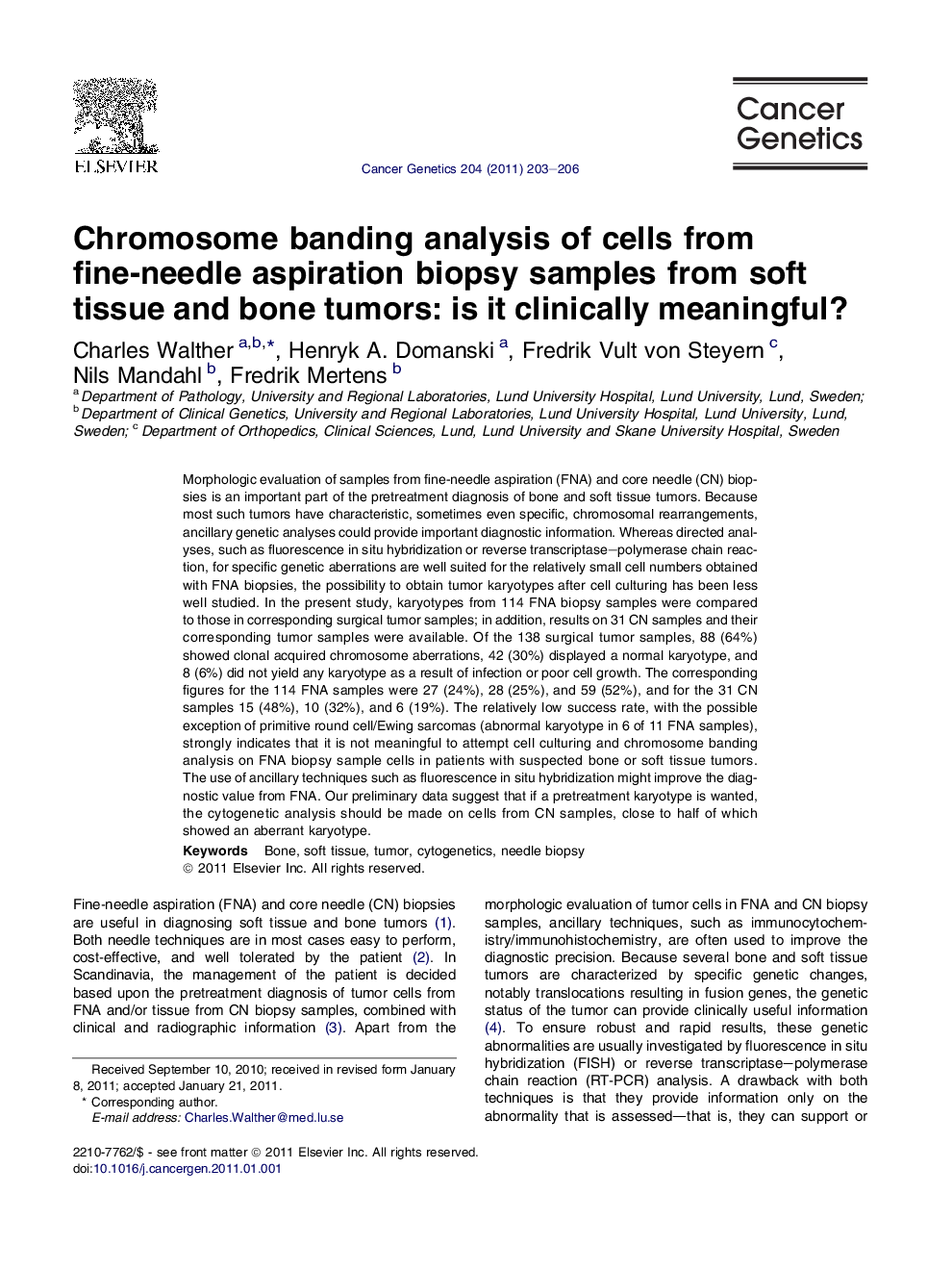| کد مقاله | کد نشریه | سال انتشار | مقاله انگلیسی | نسخه تمام متن |
|---|---|---|---|---|
| 2110533 | 1083938 | 2011 | 4 صفحه PDF | دانلود رایگان |

Morphologic evaluation of samples from fine-needle aspiration (FNA) and core needle (CN) biopsies is an important part of the pretreatment diagnosis of bone and soft tissue tumors. Because most such tumors have characteristic, sometimes even specific, chromosomal rearrangements, ancillary genetic analyses could provide important diagnostic information. Whereas directed analyses, such as fluorescence in situ hybridization or reverse transcriptase–polymerase chain reaction, for specific genetic aberrations are well suited for the relatively small cell numbers obtained with FNA biopsies, the possibility to obtain tumor karyotypes after cell culturing has been less well studied. In the present study, karyotypes from 114 FNA biopsy samples were compared to those in corresponding surgical tumor samples; in addition, results on 31 CN samples and their corresponding tumor samples were available. Of the 138 surgical tumor samples, 88 (64%) showed clonal acquired chromosome aberrations, 42 (30%) displayed a normal karyotype, and 8 (6%) did not yield any karyotype as a result of infection or poor cell growth. The corresponding figures for the 114 FNA samples were 27 (24%), 28 (25%), and 59 (52%), and for the 31 CN samples 15 (48%), 10 (32%), and 6 (19%). The relatively low success rate, with the possible exception of primitive round cell/Ewing sarcomas (abnormal karyotype in 6 of 11 FNA samples), strongly indicates that it is not meaningful to attempt cell culturing and chromosome banding analysis on FNA biopsy sample cells in patients with suspected bone or soft tissue tumors. The use of ancillary techniques such as fluorescence in situ hybridization might improve the diagnostic value from FNA. Our preliminary data suggest that if a pretreatment karyotype is wanted, the cytogenetic analysis should be made on cells from CN samples, close to half of which showed an aberrant karyotype.
Journal: Cancer Genetics - Volume 204, Issue 4, April 2011, Pages 203–206